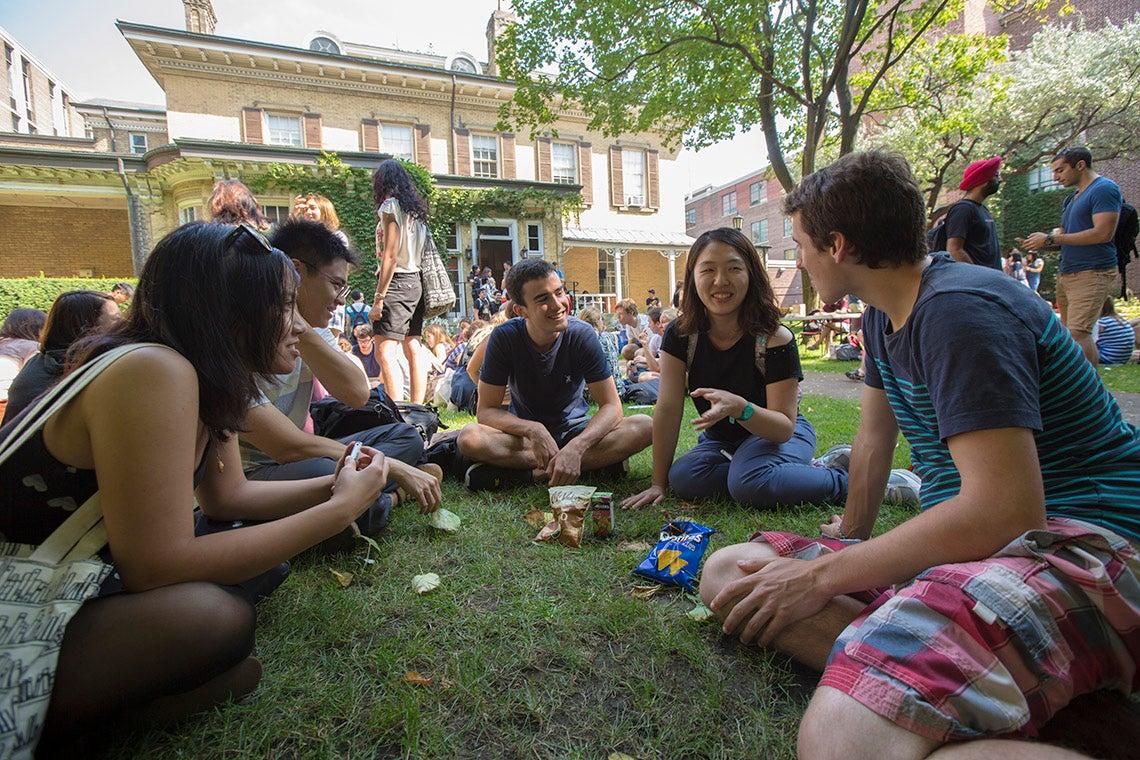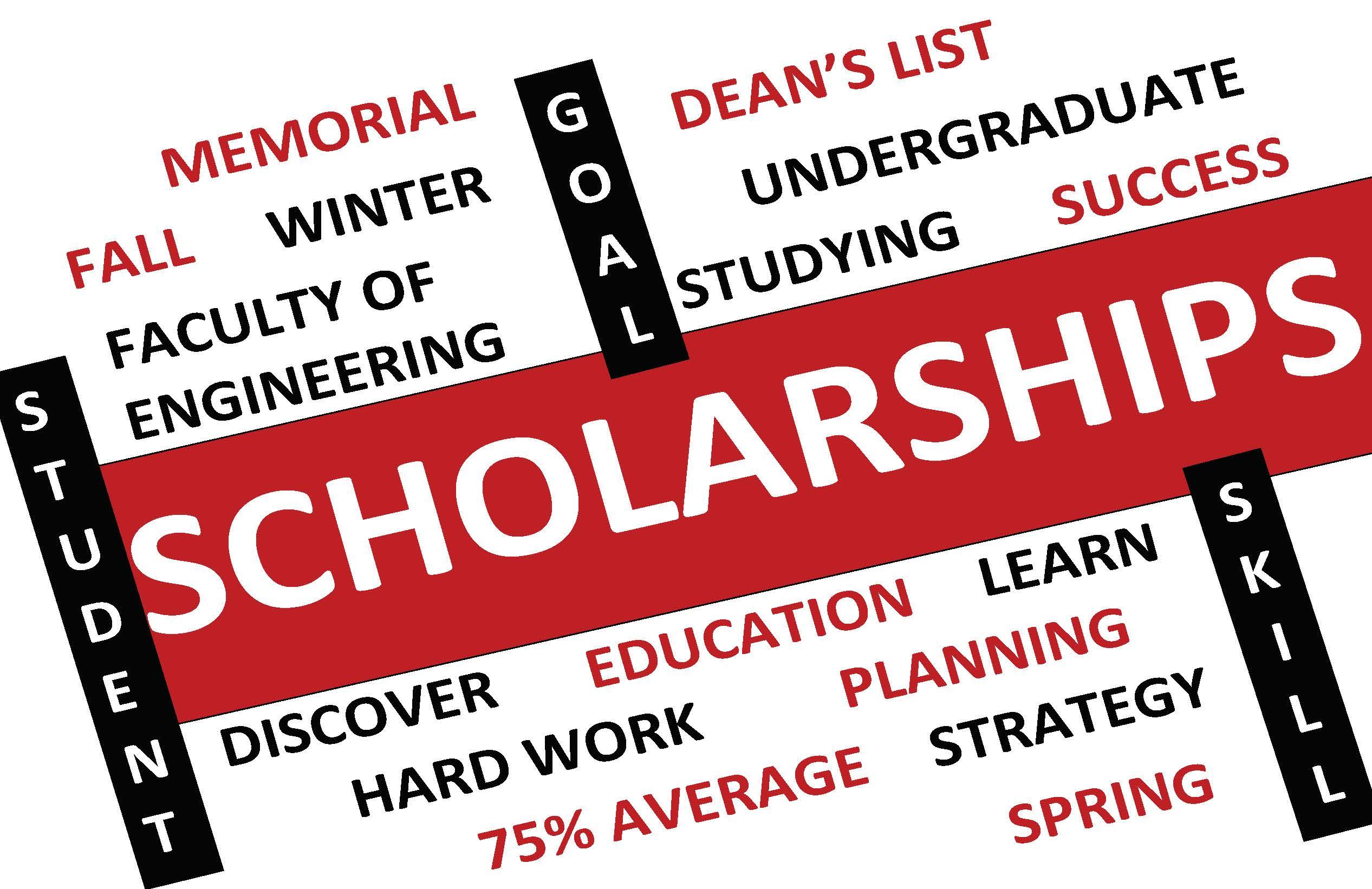For many students, studying in Australia begins as a distant idea-part aspiration, part curiosity-until a clear pathway appears. The University of Melbourne, one of the country’s leading research institutions, offers that path through a range of scholarships designed to welcome talented international students into its academic community.
These scholarships do more than ease tuition costs; they recognize achievement, support ambition, and help students build a life in a new city known for its culture, diversity, and innovation. From merit-based awards for high-achieving undergraduates to funding packages for advanced research, opportunities span disciplines and stages of study, reflecting the university’s broad commitment to global education.
This article introduces the University of Melbourne’s scholarship landscape for international applicants-what’s available, who is eligible, the kinds of benefits on offer, and how to approach the application process. If you are considering Melbourne as your academic destination, this guide can serve as your starting point and your map.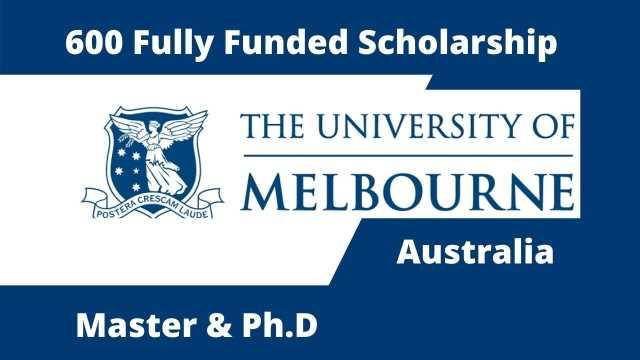
Inside the University of Melbourne Scholarship Landscape for International Students
Funding at Melbourne spans multiple pathways-from merit-based tuition fee remissions for high-achieving undergraduates to generous graduate research packages that bundle fee offsets with living stipends, relocation assistance, and health cover. Many awards are automatic on application to a degree (no separate form), while others are faculty- or region-specific and require targeted submissions. Expect a competitive, transparent system where your academic record, research potential, leadership, and community impact all matter. To map your options quickly, think in streams:
- Undergraduate merit awards: partial to full tuition remissions for outstanding international students.
- Graduate research scholarships: fee coverage, tax-free stipend, potential relocation allowance, thesis support, and Overseas Student Health Cover for you (and often dependents).
- Coursework master’s scholarships: competitive tuition discounts, sometimes with faculty “top-ups” for exceptional profiles.
- Faculty and region-focused awards: discipline-driven funds (Engineering, Business, Science, Arts) plus opportunities tailored to regions (e.g., ASEAN, South Asia, Latin America).
- External and complementary funding: Australia Awards, government or industry grants, and college accommodation bursaries that can reduce living costs.
To stand out, align your profile with explicit selection criteria and deadlines, then layer in evidence that proves fit and impact. Apply early in published scholarship rounds, and where research is involved, secure supervisor interest before submitting-your proposal, methodology, and referee reports often sway outcomes more than you think. Keep your application lean, verified, and story-driven: translate achievements into outcomes, quantify results, and show how your work addresses real-world problems in Australia and beyond.
- Start with eligibility: confirm citizenship, program type (coursework vs research), and any English proficiency or test requirements.
- Targeted fit: mirror the language of the scholarship brief; highlight leadership, innovation, and community contributions alongside GPA/WAM.
- Research pathway essentials: contact potential supervisors via “Find an Expert,” craft a focused proposal, and prepare strong academic referees.
- Coursework edge: tailor your statement to career outcomes and industry relevance; include key projects, internships, or certifications.
- Documentation discipline: provide certified transcripts, a concise scholarship CV, and clear evidence of awards/publications; avoid clutter.
- Stack smartly: check if major awards are exclusive; combine smaller bursaries or faculty top-ups when permitted to close funding gaps.
- Plan logistics: verify what the stipend and OSHC cover, factor in dependents, and align visa timing with scholarship start dates.

Funding, benefits and the real cost of living in Melbourne
Scholarship funding at the University of Melbourne is designed to remove major financial barriers for high‑achieving international students. Flagship awards typically provide a full or partial tuition fee offset and a competitive living stipend (around the mid‑AUD 30,000s per year, tax‑free and indexed), plus add‑ons that make relocation and settling in smoother. Many packages also include a relocation allowance (commonly AUD 2,000-3,000), paid leave entitlements (such as sick and parental leave for graduate researchers), research and development support, and Overseas Student Health Cover (OSHC) for student‑visa holders. These benefits pair well with Melbourne’s strong part‑time job market and student services, helping you balance study, life, and work-rights (generally up to 48 hours per fortnight during teaching periods). To optimise your scholarship, confirm your exact inclusions on your offer letter and set up essentials early-Australian bank account, Tax File Number, and OSHC activation-so your first stipend lands without delay.
- Core inclusions to look for: tuition fee remission; indexed stipend; OSHC (single); relocation support; thesis/research costs; paid leave; mentoring and career services.
- Smart setup tips: arrive with temporary accommodation booked; pre‑prepare digital copies of documents for rentals; register for University of Melbourne careers and financial‑wellbeing workshops in week one.
- Extra savings: student pricing on software and transport; eligibility for Victoria’s international student iUSEpass (discounted annual Myki), and campus subsidised clinics.
The real cost of living in Melbourne varies by suburb and housing type, but a realistic student budget is often AUD 2,100-3,000 per month for a comfortable, frugal lifestyle near Parkville/Carlton. Expect shared accommodation around AUD 230-350 per week, studios from AUD 450-650 per week, and monthly outgoings for utilities (AUD 80-150 per person), groceries (AUD 300-520), phone/internet (AUD 20-70), and transport (often AUD 100-200 depending on Myki usage-free trams operate within the CBD). Don’t forget upfront costs: bond (typically four weeks’ rent), two weeks’ rent in advance, and initial setup (linen, kitchenware, SIM, modest furniture if not furnished). With strategy, your scholarship can stretch further without sacrificing wellbeing.
- Practical ways to cut costs: target tram‑rich suburbs like Carlton, Brunswick, North Melbourne, Footscray; leverage the CBD free‑tram zone for classes and errands.
- Rent smarter: apply early via reputable platforms; consider University Accommodation or short‑term student housing while you search; share houses split utilities and internet.
- Live lighter: buy second‑hand (Facebook Marketplace, Gumtree), cook in batches, and use campus microwaves and water stations.
- Travel & work: compare Myki passes vs pay‑as‑you‑go; explore on‑campus roles and research assistantships for schedule‑friendly income.
- Safety net: know your rights (bond, condition reports), use free legal/financial advice on campus, and check emergency bursaries if circumstances change.
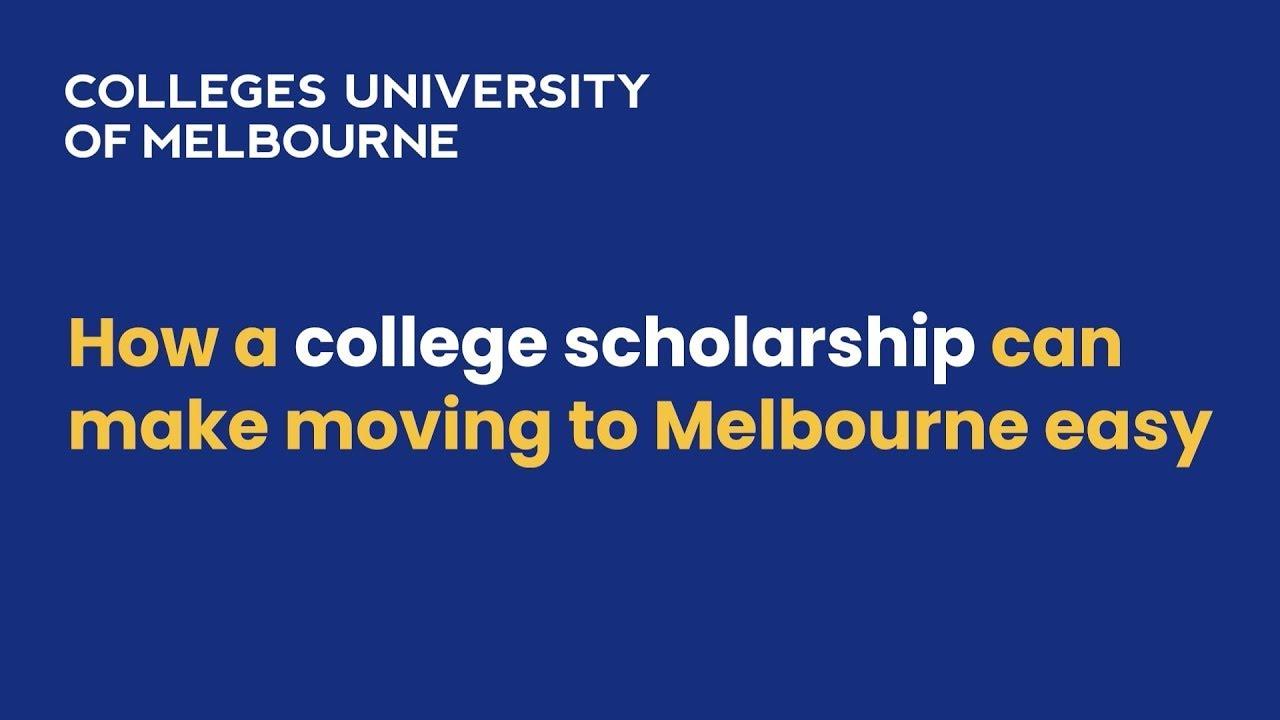
Eligibility, deadlines and required documents explained
Who can apply? International applicants (non‑Australian, non‑New Zealand citizens/permanent residents) with strong academic records are competitive for the University of Melbourne’s flagship awards, including the Melbourne International Undergraduate Scholarship (coursework) and the Melbourne Graduate Research Scholarships (MGRS) for Masters by Research and PhD. Selection is highly merit‑based and may consider your class rank, GPA, research potential, and fit with the faculty. For most awards you must either hold an offer or have a complete application under assessment for an eligible degree at Melbourne. Key criteria often include:
- Academic excellence: High ATAR/equivalent for undergraduates; strong GPA, Honours/major research project, publications or relevant experience for graduate entrants.
- Program alignment: Enrolling in a qualifying coursework program (UG/PG) or a research degree (Masters/PhD) at the University of Melbourne.
- English proficiency: Valid IELTS/TOEFL or equivalent meeting the course’s minimum; some faculties set higher scores.
- Referees and research fit (graduate research): Strong academic references and a viable proposal; securing supervisor interest greatly strengthens your case.
- Eligibility for benefits (research): Top applicants may receive a tuition fee offset, stipend, relocation allowance, and OSHC for international students under MGRS.
Deadlines and documents vary by faculty and degree. Melbourne runs two main intakes (Semester 1: Feb/Mar; Semester 2: Jul), and scholarship consideration follows course closing dates. For research, apply as early as possible to meet priority scholarship rounds and allow time for supervisor matching. Check your program’s “How to apply” page and the Scholarships portal for the precise cut‑offs. Practical steps that save time: set calendar reminders, request references 4-6 weeks ahead, and submit well before peak dates so your application is “decision‑ready.” Prepare a clean, certified file set:
- Academic records: Official transcripts, degree certificates, and the grading scale; certified translations if not in English.
- Passport ID: Biodata page for identity verification.
- English test: IELTS/TOEFL/PTE results (within validity window) or approved evidence of prior study in English.
- CV/resume: Research output, awards, internships, projects, and leadership noted clearly.
- Statement of purpose (coursework) or research proposal (MRes/PhD) aligned with Melbourne’s strengths; include potential supervisors you’ve contacted.
- References: Academic referee reports submitted through the portal; brief referees early.
- Program‑specific extras: Portfolio (design/architecture), writing sample, GRE/GMAT (if required by the faculty).
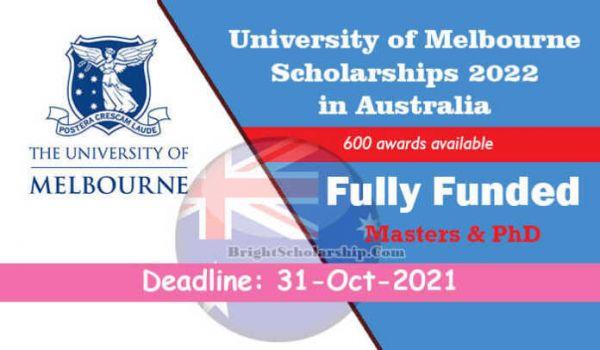
Practical strategies to strengthen your application and maximize success
Show clear academic excellence and a tight fit with the University of Melbourne’s priorities. Map your profile to the specific scholarship stream-whether the Melbourne Graduate Research Scholarships, RTP fee offsets and stipends, or the Melbourne International Undergraduate Scholarship-and curate evidence that makes selection easy. Signal alignment with faculty research clusters and degree requirements, and demonstrate English proficiency beyond the minimum. For research pathways, cultivate supervisor interest early; for coursework, showcase leadership and community impact that matches selection criteria.
- Prove sustained high performance: provide certified transcripts, class rank/WAM, rigorous subjects, and relevant awards or publications.
- Align with faculty strengths: reference labs, centers, or research themes; tailor your statement to Melbourne’s methods and impact agenda.
- Engage supervisors (research applicants): send a concise email + 1-2 page proposal outlining the problem, gap, method, and feasibility.
- Exceed language standards: target higher IELTS/TOEFL scores to stand out and streamline admission/scholarship assessment.
- Highlight distinctive value: leadership, internships, hackathons, open-source, portfolios-quantify outcomes and community benefit.
- Be timing-smart: apply early, track faculty/graduate school deadlines, and confirm any automatic-consideration awards.
Polish every document for clarity, consistency, and measurable impact. Your statement of purpose should connect your background to Melbourne’s ecosystem and to Australia’s broader research and industry landscape, while your CV must be outcome-driven. Choose referees who can speak to intellectual independence and potential; brief them with your draft materials and scholarship criteria. Close gaps proactively-convert grades to WAM where possible, certify translations, and pre-empt visa and Genuine Student requirements with a credible study plan and post-graduation trajectory.
- Craft a focused statement: hook (problem), evidence (projects/results), fit (faculty/supervisor), and impact (how funding accelerates outcomes).
- Make your CV scannable: bullets with metrics (e.g., “Improved model F1 from 0.72→0.86;” “Led 12-person team; raised $8k”).
- Select strategic referees: at least one who can assess research capacity; provide your proposal and achievements summary.
- Tailor to level: undergraduates emphasize top predicted/final marks for automatic awards; postgraduates show research readiness or industry relevance.
- Prepare proofs early: certified documents, portfolio links, English test dates, and a one-page “Scholarship Fit” brief for each application.
- Rehearse interviews (if applicable): practice articulating your contribution to Melbourne’s academic community and global impact.
Concluding Remarks
Choosing where and how to fund your study is rarely a single leap; it’s a series of careful steps. The University of Melbourne’s scholarships sit among those steps as one potential route for international students to balance ambition with practicality. Each award carries its own rhythm-eligibility, selection criteria, benefits, and obligations-so let the fine print be your compass rather than an afterthought.
If you’re exploring this path, map out your timeline early: note application windows, prepare documentation, and understand how scholarships intersect with tuition, living costs, and visa requirements. Compare options across coursework and research programs, and confirm current details on the university’s official pages, as policies and deadlines can change.
Whether you proceed with an application now or keep researching alternatives, treat this decision as part of a broader plan for your studies and career. With clarity about your goals and an eye on verified information, you’ll be better placed to choose the support that fits-and to start the next chapter with purpose and calm.

